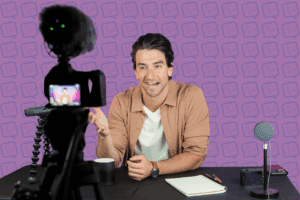The Halo Effect That Influencers Create and How it Can Benefit Brands

Brands over the past 5 years have realized that marketing with influencers can be a powerful tool. Being able to educate varying audiences about a brand’s product or service through creators can be essential to a brand’s success. From a creator and brand standpoint, it is important to keep the Halo Effect in mind when partnering with companies.
So what is the Halo Effect?
The Halo Effect is the tendency of followers to use their high regard toward a creator to make assumptions about them in other aspects. Since influencers are so highly regarded by their following, they will trust what their favorite creator believes about a product or service. For example, if a creator is successful in the beauty industry and creates mostly beauty content, and they promote a mental health app, their following is more likely to believe the app is great based on the influencer’s opinion or review. In this case, trusting them as a beauty influencer shapes the audience’s belief on whether the creator’s review of the app is trustworthy, despite the beauty influencer not being an expert on mental health. Influencers are well-versed on internet culture and relating to their audience, so it makes sense that we will trust their opinions. Much like how we turn to lawyers for legal advice, we turn to influencers we trust for product reviews.
The Psychology Behind the Halo Effect
The background of the Halo Effect is rooted in psychological phenomena. Cultural conformity is a large player in the success of influencer marketing. Humans instinctively have a need to fit in, and because influencers have a certain celebrity status of their own, the things they think are worth using and buying hold weight. From a psychological perspective, if you consume the things that the people who are the trendiest and most influential are consuming, you will be like the other people who follow this person. Research has shown that the brain will even reward you for maintaining conformity.
As an audience grows a personal connection to a creator, they will want to help them in ways they feel are in their control. Using an influencer’s code to purchase a product they advertised can put a little money back in their pocket or watching a sponsored video can help the creator build revenue on a video. Because viewers feel a personal sense of connectedness with the creator, they will want to help them out, like helping a close friend.
The Risk
While there are numerous upsides to the Halo Effect around influencers, there is a downside to be considered. If an influencer has a social mishap and becomes unfavorable among the public, the brands that they partner with can also be affected. Since we base so much of what we consume on looks, if the influencer gains a bad reputation, this can mean bad things for the brand in return. Influencers must be conscious of the footprint they leave online but Brands must also do research on the influencers they choose to work with. At InfluenceLogic, we have an entire team dedicated to ensuring brand safety and FTC compliance for our brand partners to help prevent risks when possible.
Conclusion
The Halo Effect is something that brands cannot ignore when evaluating influencer marketing strategies. The strong bond between viewers and influencers creates a trust in opinion that is often unmatched. When done skillfully, pairing an influencer with the proper brand to match the target audience can yield incredible results and benefit both the creator and the brand greatly.
If you’re interested in learning more about InfluenceLogic and how we provide brands the opportunity to grow a scalable influencer program, feel free to reach out to our Brand Partnerships team at brandpartnerships@influencelogic.com.





